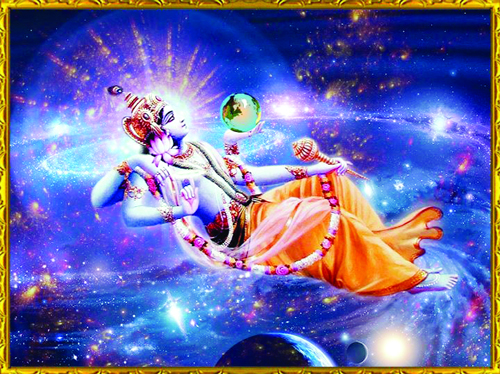R C Kotwal
Purana (Sanskrit) meaning (“Belonging to ancient or older times) is the name of ancient Indian genre of Snathan dharma. They primarily are post Vedic texts containing a narrative of the history of the Universe, from creation to destruction, genealogies of the kings, heroes and demigods and description of Hindu cosmology, philosophy and geography. Purans are called the friendly treatises and are usually written in the form of stories related to one person to another. Rishi Vyasa is considered to be compiler of Puranas. An early reference to Purana in its present form can be traced to the Chandogya Upanishads in which the saga Narada refers to. Purans are estimated to 1500-2000 BC, bulks are said originated during Gupta period also. In the opinion of some scholars, they are said to narrate five subjects.
i) Sarga
The creation of the Universe.
ii) Prati- sarga
Secondary creations, mostly re-creations after dissolution.
iii) Vamsa Genealogy of gods and sages.
iv) Manvantra
Creation of Human race and first Human beings.
v) Vam sanucaritam Dynastic histories.
There are 18 Mahapuranas and 18 Upapuranas which are as follows.
i) Vishnu Puran (15,400 verses)
ii) Shiva Puran (24,000 verses)
iii) Naradiya Puran (25,000 Verses)
iv) Padma Puran (55,000 Verses)
v) Garuda Puran( 19,000 Verses)
vi) Varaha Puran (10,000 Verses)
vii) Bhagavata Puran (18,000 Verses) Most celebrated
viii) Matsya Puran (14,000 Verses)
ix) Kurma Puran (17,000 Verses)
x) Linga Puran( 11,000 Verses)
xi) Skanda Puran (81,000 Verses) longest
xii) Agni Puran (15,400 Verses)
xiii) Brahma vaivarta Puran (18,000 Verses)
xiv) Markandeya Puran (9,000 Verse)
xv) Bharishya Puran (14,500 Verses)
xvi) Vamana Puran (10,000 Verses)
xvii) Brahma Puran (24,000 Verses)
xviii) Brahmanda Puran (12,000 Verses)
Puranas gives lots of insights into the present day Snathan dharma or Hinduism as we call it. It is a scientific religion. Newton rested under a tree and he received the knowledge of gravity as an apple fell on his head. India knew about the Gurutvakarshan shakti (gravitational force) thousands of years before Newton discovered it. The knowledge of whole world is round was present in the ancient Khagoal Vigyan. Our ancestors had this knowledge. That’s why they kept the sun in the middle. In most ancient temples which are around 2000 yrs old, you will find the sun god in the middle looking towards the east and all the other planets are kept around it. Now-a days it is taught that Galileo discovered that the earth is round. Snathna Dharma is very close to the modern science.
The Puranas are not imaginative; they are actual histories, not only of this planet but other planets within the creation. Sage Veda Vyas due to his kindness and sympathy towards the fallen souls, supplemented the Vedas with Puranas, which easily explain the Vedic truths, intended for different types of people. The Vedas and Puranas are one and the same in purpose. They ascertain the absolute truth. Puranas are a genre of the religious literature of India. They were the scriptural basis for the development of many Hindu Sects. They developed into the popular literature about Gods and Goddesses of Samathan Dharma.
The All India Kashraj Trust, formed under Vibuti Narayan Singh, the Maharaja of Kashi, dedicated itself to publishing editions of Purans. The Purans are authoritative scriptures of Hindu Dharma. Sri Aurobindo said the Purans are of the same class as the ithiasas (the Ramayana, Mahabharata etc. they have five characteristics History, Cosmology, Creation, Genealogy of kings and Genealogy of Manvantras (the period of Manu’s rule consisting of 71 celestial Yugas or 308,448,000 yrs). All the purans belong to Suhrit-Sammitas or friendly treatises while the Vedas are called the Prabhu-Sammitas or the commanding treatises with great authority.
In Puranas, the supreme truth is made known to one and all including ordinary men, in a very simple manner. It is believed that there were approx. 64 Puranas consisting of 18 Maha-Puranas, 18 primary Upa Puranas and the rest are seconday Upa puranas.
Rishi Vyasa, the narrator of epic Mahabharata is believed to have originally compiled the Puranas. But the earliest written text dates back to the time of Gupta period around 300-350 BC. Of course this date does not in any way indicate the Puranas. But experts believe the Puranas are essentially dynamic in nature and have constantly evolved and been modified over the subsequent centuries and continue so even to date.
(The author is Superintendent of police S.K.Police Academy Udhampur, romeshkotwal3@gmail.com)
Trending Now
E-Paper


